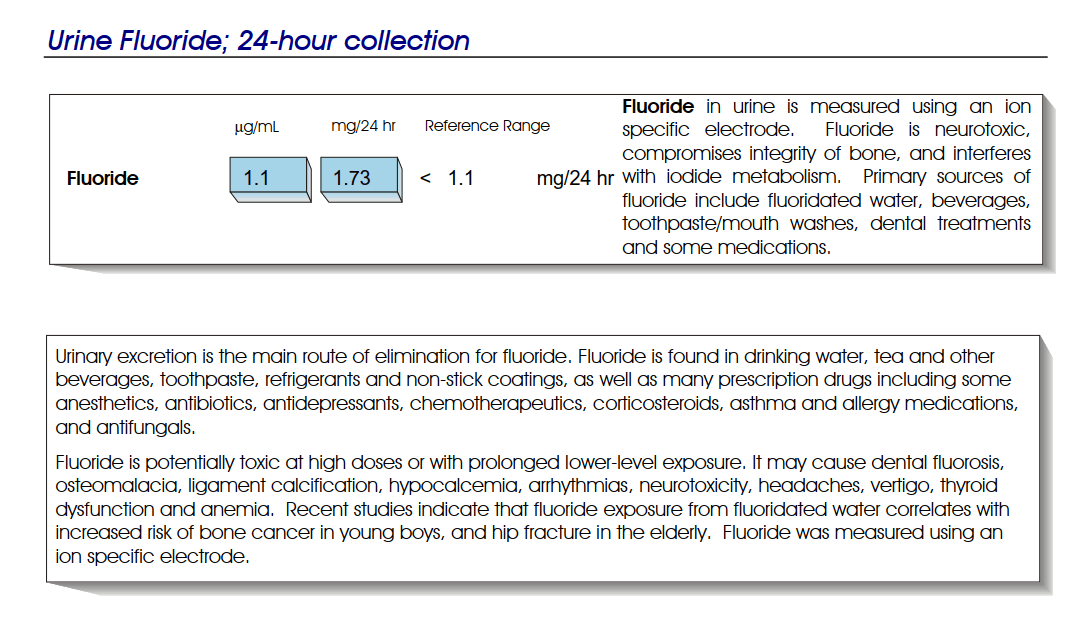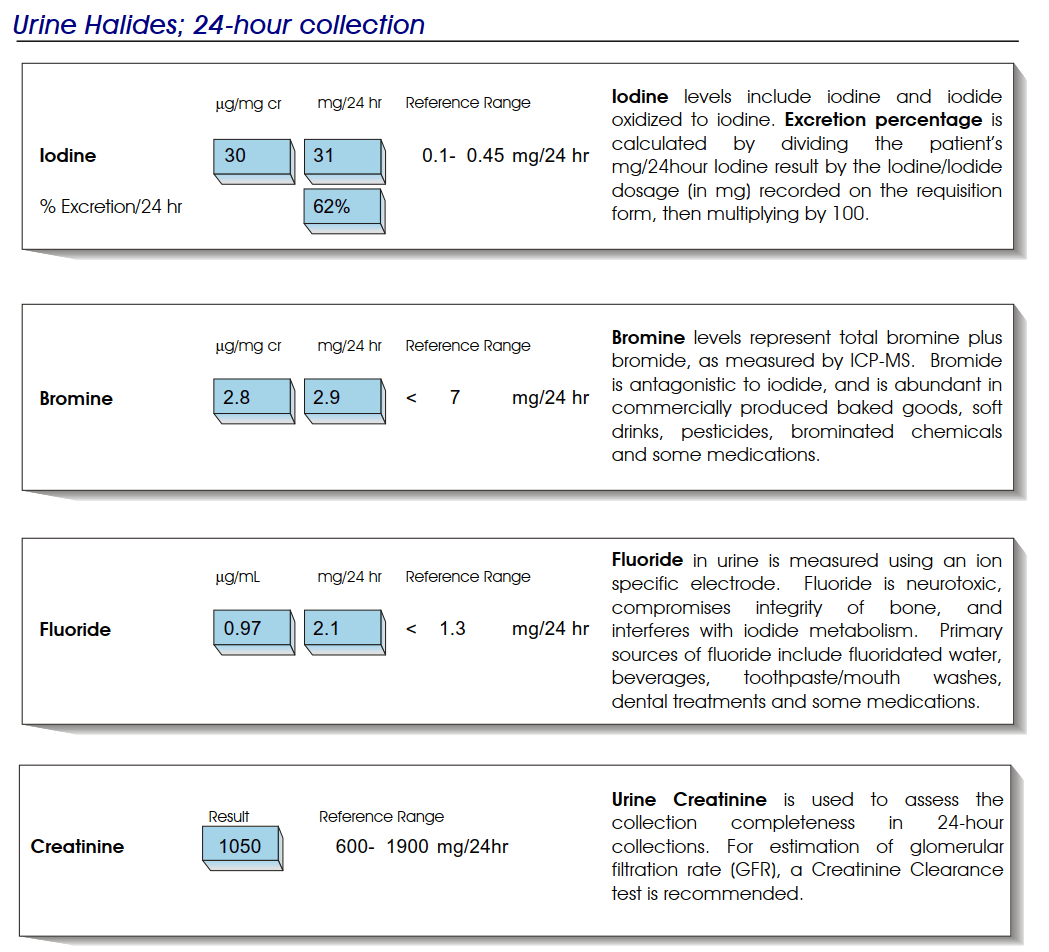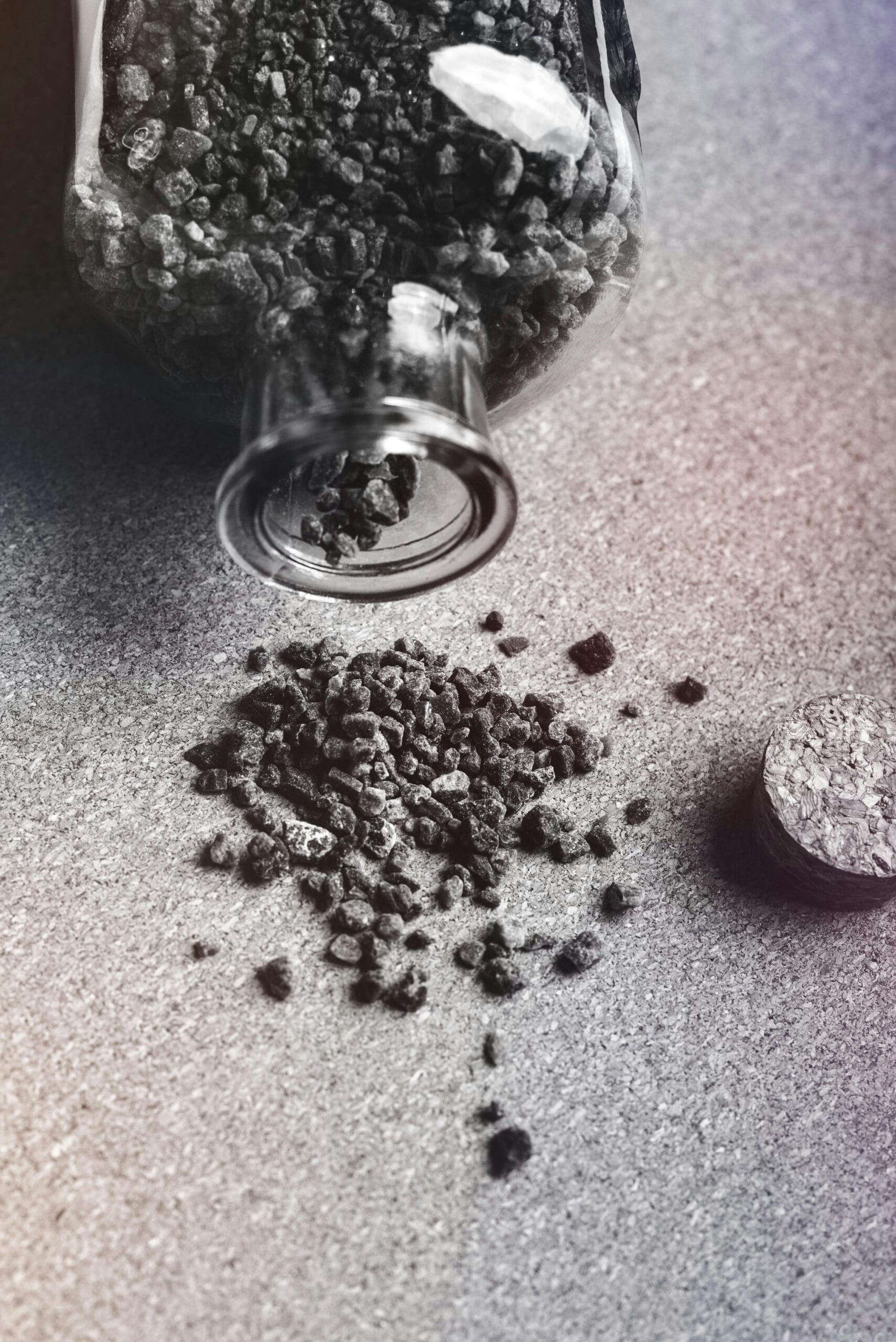Is Fluoride Bad for You?
Did you know that fluoride in your tap water could be disrupting your sleep—and, over time, cutting into your longevity?
While it’s praised for dental health, research suggests it accumulates in your pineal gland—the organ that regulates sleep and melatonin production.
Over time, this buildup may calcify the pineal gland, disrupt melatonin, and shorten sleep cycles—a critical factor in aging and disease.
Get Weekly Insights to Personalize Your Own Longevity Roadmap
Given that poor sleep is directly linked to shorter lifespans, it’s worth questioning “is fluoride bad for you” and accelerating your aging?
By the end of this article, you’ll understand:
- How fluoride affects sleep quality and longevity
- What research reveals about fluoride-free diets and pineal health
- Why testing your fluoride levels should come before filtration
- The best water filter to remove fluoride and other strategies
Let’s dive in.
(By the way, are you curious about who’s guiding you through this journey? Learn more about who we are and what got us here.)
Table of Contents
1. Fluoride and Sleep: Addressing Fluoride Toxicity
When sleep starts to decline, we often point fingers at the usual culprits—too much screen time, stress, late-night eating.
But what if something as routine as drinking water, is interfering with deep, restorative sleep?
Recent research suggests that fluoride toxicity may disrupt the body’s natural sleep-wake cycle, particularly in adolescents and adults.
The link isn’t widely discussed, but it’s becoming harder to ignore.
Fluoride Toxicity: What Studies Reveal About Sleep Disruption
- Malin & Till (2019) – Using data from the National Health and Nutrition Examination Survey (NHANES), this study found that higher fluoride exposure was associated with later bedtimes, reduced sleep duration, and an increased likelihood of sleep apnea symptoms in adolescents.
- Cunningham et al. (2021) – A Canadian study linked higher urinary fluoride levels with higher risk of getting less than recommended sleep.

Fluoride Dementia Risks: Why Sleep Impacts Longevity
Poor sleep isn’t just about feeling groggy in the morning.
It accelerates aging at the cellular level and contributes to some of the most common chronic diseases. Long-term sleep disruption has been linked to:
- Increased risk of neurodegenerative diseases like Alzheimer’s (potentially tied to fluoride dementia risks), as poor sleep impairs the brain’s ability to clear waste products.
- Higher rates of cardiovascular disease, with even minor reductions in sleep quality elevating blood pressure and inflammation.
- Increased all-cause mortality risk, as poor sleep is associated with metabolic dysfunction, immune suppression, and a greater likelihood of chronic illness.
If even a small amount of fluoride disrupts melatonin and sleep, it’s time to question its place in your water. Let’s look closer.
2. What Going Fluoride-Free Could Mean for You
We don’t really think about fluoride—it’s just there, in our tap water, processed food, there’s even fluoride in water bottles.
But what if it was interfering with something far more critical than we realize—something that controls how well we sleep, recover, and even age?
At the center of this question is the pineal gland, the body’s internal clock:
It regulates circadian rhythms and controls the release of melatonin, the hormone that tells the body when to sleep and when to wake.
But melatonin’s role goes beyond sleep—it acts as a master regulator, influencing everything from immune function to cellular repair and resilience against aging.
If melatonin is so essential, anything that disrupts its production could have wide-reaching effects. Fluoride, unlike many other substances we ingest, doesn’t just pass through the body. It accumulates in the pineal gland, forming mineral deposits that may interfere with melatonin production.
As melatonin declines, sleep quality deteriorates, repair processes slow, and the body’s defenses against oxidative stress weaken. Over time, this can affect everything from cognitive function to metabolic health, making the connection between fluoride exposure and longevity impossible to ignore.

So what happens when fluoride is removed?
If the pineal gland is no longer burdened by fluoride side effects on brain, could melatonin production recover?
Could better sleep translate to better aging?
Research suggests that reducing fluoride exposure may help restore pineal function, leading to improved sleep cycles:
Fluoride Side Effects on Brain: Science of Fluoride-Free Living
Early research suggests that fluoride removal could allow the pineal gland to function more effectively, restoring its role in sleep regulation and recovery.

Animal studies provide a clue.
- A study on aged rats found that those on a fluoride-free diet had significantly more pinealocytes (melatonin-producing cells) compared to those exposed to fluoride. This suggests that fluoride accumulation doesn’t just happen passively—it may actively suppress the pineal gland’s ability to function.
- Possible Mechanism – Without fluoride interfering with normal processes, the pineal gland may sustain higher melatonin output, improving sleep cycles, reducing oxidative stress, and supporting longevity.
Reduce Fluoride in Water for Better Longevity?
Melatonin is more than just a sleep hormone. It plays a direct role in aging and disease prevention. Beyond regulating sleep, melatonin functions as:
- A powerful antioxidant – Neutralizes free radicals and lowers oxidative stress, a key driver of aging.
- A neuroprotector – Defends against brain inflammation which is linked to cognitive decline and neurodegenerative diseases.
- An immune regulator – Helps control inflammation, reducing the risk of chronic disease.
If fluoride exposure impairs melatonin production, figuring out how to reduce fluoride in water becomes one of the important ways to enhance the body’s natural defenses against aging.
3. Fluoride and Pineal Gland Calcification: The Mechanism
Picture a snow globe. Shake it once, and at first, it looks fine.
But over time, those tiny white flakes settle and harden into a crust.
This is how pineal gland calcification from fluoride happens—slowly accumulating over the years.
But instead of harmless flakes, it’s fluoride and calcium binding together inside your pineal gland, creating mineral deposits that may limit its function.
A 2001 study provided the first strong evidence that fluoride doesn’t just pass through the body—it accumulates in the pineal gland at far higher concentrations than in any other soft tissue. Further research from Thailand found that as fluoride levels rose, so did calcium deposits in the pineal gland, reinforcing the connection between fluoride exposure and calcification.
So what exactly is happening?

Symptoms of Calcified Pineal Gland: How Fluoride Affects You
The pineal gland is uniquely vulnerable because it isn’t protected by the blood-brain barrier. It has a rich blood supply, meaning anything in circulation, including fluoride, has direct access.
Once inside, fluoride interacts with calcium, forming fluoroapatite crystals. These mineralized deposits are similar to what’s found in bones and teeth, but they have no business being in a gland responsible for regulating sleep and aging.
Over time, this process stiffens the pineal gland, making it less responsive to light cues and melatonin production, possibly disrupting sleep, circadian rhythms, and hormonal balance. Those with symptoms of calcified pineal gland might notice sleep issues or hormonal shifts, though more research is needed.
The takeaway?
If fluoride contributes to calcification, using a water filter to remove fluoride is a straightforward way to protect your pineal gland from premature dysfunction.
4. Other Health Concerns from Fluoride Exposure: Is Fluoride a Neurotoxin
Fluoride’s impact doesn’t stop at the pineal gland. Research suggests it may also affect brain function and endocrine health.
This raises the question: is fluoride a neurotoxin?
- Cognitive effects – Multiple studies have linked fluoride exposure to lower IQ scores in children. A Harvard review identified a correlation between high fluoride levels and cognitive impairment.
- Thyroid disruption – Fluoride competes with iodine, which is essential for thyroid hormone production. Some studies have found higher rates of hypothyroidism in areas with naturally high fluoride levels.
These findings raise an important longevity question. Even if fluoride helps prevent cavities, is systemic exposure worth the potential side effect of fluoride in water on brain health and longevity?
5. Understanding the Research Gaps
The research on fluoride’s health effects is not entirely settled. While animal studies and observational data suggest potential risks, studies proving direct causation remain limited.
Several factors contribute to this uncertainty:
- Fluoride accumulates in the pineal gland, but how much varies between individuals.
- The long-term effects of low-level fluoride exposure aren’t fully understood, as most research focuses on high-exposure regions.
- Many fluoride studies examine extreme natural fluoride levels, raising questions about whether fluoridated municipal water poses the same risks.
Despite these uncertainties, I believe in taking a precautionary approach.
While research continues to evolve, reducing unnecessary fluoride exposure seems to be a logical step to optimize for longevity
6. Fluoride Worldwide: A Global Perspective
Fluoridation is far from universal.
While some countries continue adding fluoride to drinking water, others have banned or never adopted the practice.
Fluoride in Water: How Common Is Fluoridation Globally?
- Worldwide: Only about 5% of the global population drinks artificially fluoridated water.
- United States: Roughly 73% of Americans receive fluoridated municipal water, making it one of the most heavily fluoridated countries in the world.
- Canada: Fluoridation rates vary by province, with national coverage around 38%.
Fluoride in Water Bottles: Global Fluoridation Policies
- Europe: Most European countries do not fluoridate their water. Less than 3% of the population in Europe receives fluoridated water, with countries like Germany, France, and the Netherlands rejecting the practice in favor of other dental health strategies.
- Australia & New Zealand: Fluoridation is widespread, covering approximately 70-80% of the population.
- Asia: Most Asian countries do not fluoridate water, but natural fluoride pollution is a major concern in parts of India, China, and some African regions, where groundwater fluoride levels can be dangerously high.
Side Effect of Fluoride in Water: Why Some Ban Fluoridation
Some governments have actively banned or discontinued fluoridation, citing concerns over health risks, ethical issues, and a lack of conclusive long-term studies:
- Japan, Sweden, and the Netherlands have rejected water fluoridation entirely.
- Portland, Oregon remains one of the largest U.S. cities that has repeatedly voted against fluoridation.
The disparity in fluoridation policies raises a critical question—if fluoridated water is truly necessary for dental health, why have so many countries banned it?
Many have chosen alternative strategies, such as fluoride toothpaste and education programs, without evidence of worse dental health outcomes compared to fluoridated nations.
Fluoride in Water Pollution: High-Risk Groundwater Areas
While most discussions on fluoride focus on artificial water fluoridation, natural fluoride pollution in groundwater is a serious health issue in many regions.
Unlike controlled fluoridation in municipal water supplies, naturally occurring fluoride can reach dangerously high levels, leading to skeletal fluorosis, dental fluorosis, and other health problems.

Regions with High Natural Fluoride in Groundwater
- India – Some of the highest naturally occurring fluoride levels in the world. States like Rajasthan, Andhra Pradesh, and Gujarat have fluoride concentrations well above 1.5 mg/L, the WHO’s recommended limit. Chronic fluoride exposure in these areas has led to widespread skeletal fluorosis, causing joint stiffness, bone deformities, and dental discoloration.
- China – Groundwater fluoride levels are dangerously high in northern China, particularly in regions like Inner Mongolia and Shandong. Long-term exposure has been linked to higher rates of bone diseases and dental fluorosis.
- Africa – Countries such as Kenya, Tanzania, and Ethiopia have natural fluoride levels exceeding 10 mg/L in some water sources. The Rift Valley region is one of the most affected areas, where skeletal fluorosis is a public health crisis.
- Mexico – Certain parts of Mexico, especially in arid regions, experience fluoride contamination due to volcanic rock deposits that leach fluoride into groundwater.
- Middle East – Iran and some areas of Saudi Arabia have high natural fluoride levels in groundwater, contributing to dental and skeletal fluorosis.
- United States – Some regions, particularly in the western states like Texas, Colorado, and parts of California, have naturally elevated fluoride levels, occasionally exceeding the EPA’s maximum contaminant level of 4.0 mg/L.
7. 🚀 Start Here: Fluoride Testing for Personal Detox & Longevity Planning
Most fluoride tests focus on water—but if you’re concerned about long-term exposure, what matters is test fluoride levels in body
Before you invest in a filter or overhaul your water setup, the smartest first step is to test your body’s actual fluoride burden.
Here’s why:

- Everyone’s exposure is different. Fluoride isn’t just in water—it’s also in toothpaste, food, dental treatments, and some medications. You may be getting more than you realize.
- Everyone’s retention is different. Your body’s ability to eliminate fluoride depends on your thyroid health, iodine levels, and overall detox function.
- Fluoride builds up over time. Unlike many environmental toxins, fluoride accumulates in sensitive tissues—especially the pineal gland and bones.
- There’s no way to estimate past exposure without testing. Even if you stop fluoride today, you can’t know what’s already stored in your system unless you test.
Testing doesn’t just give you numbers—it gives you a starting point, so your filter and detox efforts aren’t based on guesswork.
Track Your Fluoride Exposure Before You Filter
Even the best water filter can’t tell you what your body is holding onto. This urine fluoride test measures your fluoride and halide levels—helping you identify exposure, assess detox performance, and personalize your next steps.
Why Test Fluoride Levels in Body?
Most people rush to buy a filter—but without testing, you’re flying blind.
A urine fluoride test isn’t just data—it’s a reality check. It reveals how much fluoride your body is actually excreting, which helps you assess both your daily exposure and your body’s ability to eliminate it.
It reflects what you’ve recently absorbed from drinking water, food, dental treatments, toothpaste, and medications—and whether those exposures are adding up.
Already filtering your water? This test can show you if your setup is working—or if fluoride is still slipping through.
Want Deeper Insight?
If you want to go beyond just fluoride, the urine halide panel gives you a more complete picture of how multiple environmental exposures may be affecting your body.
This test measures three critical halides:c
- Fluoride – neurotoxic, impacts melatonin and thyroid signaling.
- Bromine – found in soft drinks, baked goods, and some medications; competes with iodine.
- Iodine – essential for thyroid hormone production, energy metabolism, and immune balance.
These elements all compete at the thyroid receptor level, which means excess fluoride or bromine may block iodine uptake—disrupting your thyroid, your metabolism, and even your sleep quality.
If you’re dealing with fatigue, sleep issues, hormonal imbalances, or stubborn weight gain, this test can help identify whether halide competition is part of the problem.

8. After Testing: How I Eliminate Fluoride and Other Water Toxins
Once we’ve measured what’s happening inside your body, the next step is to reduce exposure at the source. For many, that starts with drinking water.
Fluoride is just one of many contaminants found in drinking water—but unlike most, it bioaccumulates in sensitive tissues like the pineal gland, potentially interfering with sleep, hormone balance, and overall longevity.
At Longevity Vault, our approach is simple: if a substance doesn’t belong in your water, it doesn’t belong in your body. We take this approach with other toxins too—arsenic in rice is a prime example of a daily exposure most people overlook.
Instead of targeting just one contaminant, I focus on removing everything that could interfere with health and longevity.

Fluoride, heavy metals, pesticides, pharmaceuticals—if it has the potential to accumulate and disrupt biological functions, it’s worth eliminating.
To achieve this, I d esigned my own 2-tier, 7-stage home water filter system—a custom solution that tackles a wide range of impurities with precision.
9. Setting Up Your Reverse Osmosis System for Fluoride Removal
Does Reverse Osmosis Remove Fluoride? The Gold Standard
Does reverse osmosis remove fluoride? Yes—reverse osmosis remains the most effective and practical fluoride water filter.
A properly configured RO system removes up to 99% of fluoride, along with heavy metals, chlorine, pesticides, and pharmaceutical residues.
But not all RO setups are created equal—optimizing your system makes the difference between decent and truly pure water.
How to Remove Fluoride in Tap Water: Optimizing RO Systems
1. Filter That Removes Fluoride: Using a Pre-Filter
- Why? Standard RO membranes remove 85-92% of fluoride, but effectiveness drops over time.
- Solution: Use an activated alumina pre-filter—one of the top filters that remove fluoride—before the RO membrane to increase removal efficiency to 98-99%.
- Activated alumina is highly effective at binding fluoride, but it works best at a pH of 5-6.
- Some RO systems come with built-in fluoride pre-filters.
2. Optimize Water Pressure (60+ PSI for Best Performance)
- Why? RO membranes require adequate water pressure to push contaminants through the filtration layers effectively.
- Solution: If your home’s water pressure is below 60 PSI, install a booster pump to maintain optimal flow and maximize fluoride rejection.
- If pressure is below 40 PSI, the system may fail to remove enough fluoride.
- If pressure exceeds 80 PSI, install a pressure regulator to prevent damage to the membrane.
3. Choose the Right RO Membrane
- Why? Not all membranes filter fluoride equally.
- Solution: Use an NSF/ANSI 58-certified membrane, tested specifically for fluoride reduction.
4. Water Filter to Remove Fluoride: Multi-Stage RO Systems
Use an RO system with at least the following filtration stages:
- Sediment pre-filter – Traps large debris, protecting the RO membrane.
- Carbon pre-filter – Removes chlorine, which degrades RO membranes.
- RO membrane – The core stage that filters fluoride and other contaminants.
- Post-carbon filter – Polishes the water for better taste.

5. How to Filter Out Fluoride in Water: Filter Replacement Tips
- Why? Overused filters lose efficiency, allowing fluoride to slip through.
- Solution: Follow these replacement guidelines:
- Sediment pre-filter: Every 6-12 months
- Carbon pre-filter: Every 6-12 months
- RO membrane: Every 2-3 years (replace sooner if fluoride levels increase)
- Post-carbon filter: Every 12 months
6. Fluoride Brain Damage Prevention: Testing Your Water
- Why? Even a top-tier RO system isn’t foolproof. Fluoride levels should be periodically checked.
- Solution: Use a fluoride test kit or digital fluoride meter to monitor effectiveness when figuring out how to remove fluoride in tap water.
- If fluoride levels rise, check for clogged pre-filters or an aging RO membrane.
7. Consider a Whole-House Fluoride Filter for High-Fluoride Areas
- Why? If your local water supply has excessively high fluoride, under-sink filtration may not be enough.
- Solution: A whole-house activated carbon, bone char, or activated alumina filter—another water filter to remove fluoride—can reduce fluoride levels that you use for showering & extend the lifespan of your RO membrane.
10. Reassessing Fluoride’s Role in Dental Health
Fluoride’s reputation comes from its role in preventing cavities, but how it works matters. The strongest evidence supports topical fluoride application, not ingestion.
Brushing with fluoride toothpaste directly strengthens enamel, making teeth more resistant to decay. Mouth rinses offer similar benefits. But drinking fluoridated water? The evidence for systemic fluoride improving dental health is weak, especially in adults. Meanwhile, the risks of long-term fluoride accumulation are harder to ignore.
If fluoride’s main benefit comes from direct contact with teeth, why ingest it at all? A better approach is using fluoride where it’s effective—on your teeth—while keeping it out of your drinking water.
11. Final Steps: How to Take Control of Fluoride Exposure for your Longevity
Filtering fluoride is a smart move—but it’s just one part of a bigger longevity strategy.
To truly protect your brain, sleep, thyroid, and long-term health, it’s not enough to remove fluoride from your water—you also need to understand how much fluoride is already in your body.
That’s why I recommend starting with testing for fluoride in your system. Because fluoride accumulates in tissues over time, there’s no other way to assess your internal burden or know if your detox systems are keeping up.
Get Weekly Insights to Personalize Your Own Longevity Roadmap
Here’s how to take action, step by step:
Step 1: Fluoride Testing First
Measure your actual fluoride and halide levels using a urine fluoride test. It’s the best way to see what you’re excreting—and how fluoride interacts with iodine and bromine at the thyroid level.
→ Check your fluoride and halide levels here
Step 2: Remove Fluoride in Water
If your test reveals elevated levels—or if you want to reduce your exposure proactively—install a water filtration system that removes fluoride effectively. I use a custom 2-tier, 7-stage system that removes fluoride, heavy metals, pesticides, and more.
→ Read how I designed my system
Step 3: Retest Fluoride Levels, Refine Your Detox, and Track Results
If you’ve already taken steps to reduce fluoride, testing again can show whether your interventions are working. It’s also a powerful way to validate your system and track improvement over time.
Conclusion: Test Fluoride, Filter Smart, and Take Control of Your Longevity
Fluoride exposure might seem minor—but when it’s in your drinking water, tea, and toothpaste every single day, it adds up.
Since the 1940s, fluoride has been added to municipal water supplies in the U.S., now reaching over 70% of the population, typically at 0.7 mg/L. That may seem small—but unlike most chemicals, fluoride accumulates, as we’ve explained in this article.

And here’s the real problem:
No one’s tracking how much you’ve absorbed over a lifetime.
No one’s adjusting for your detox capacity, thyroid health, or sleep quality.
And no one’s checking how fluoride interacts with iodine or bromine in your body.
In other words—there’s a lot of fluoride, and a lot of unknowns.
So if something you drink every day could be interfering with sleep, hormone balance, and long-term brain health…
Why not find out?
Testing is the high-leverage first step—the only way to know how much fluoride your body is holding onto, and whether it’s already affecting your detox capacity, thyroid, or sleep.
From there, removing it becomes a personalized, data-driven decision—not a guess.
Longevity isn’t just about adding the right things.
It’s about measuring what doesn’t belong—and making your next move with clarity.
Frequently Asked Questions (FAQ)
What does a urine fluoride test show me?

This test measures how much fluoride your body is excreting. It reflects recent intake from drinking water, food, dental treatments, and medications—and shows how well your body is clearing it.
What’s the difference between the fluoride-only test and the halide panel?
The fluoride test gives you a focused snapshot of recent fluoride exposure. The halide panel includes fluoride, iodine, and bromine—which all compete for thyroid receptors and can impact your hormones, metabolism, and sleep.
→ Compare test options here
Do I need to stop supplements before testing?
In most cases, you don’t—but you should review any supplements that contain iodine, fluoride, or detox agents. Refer to the test prep guide for details.
How often should I retest fluoride levels?
We typically recommend retesting 2–3 months after major changes—like switching your water filter or adjusting iodine intake. It’s the best way to track whether your strategy is working.
Can this test help if I already use a water filter?
Yes—and it’s one of the best uses. If you’re already filtering, testing helps confirm whether your system is effective or if fluoride is still slipping through.
Do Brita filters remove fluoride?
No, Brita filters aren’t designed to remove fluoride effectively. Most water filter pitchers only manage to filter out less than 10% of fluoride in water, which doesn’t offer meaningful protection against side effects of fluoride in water or risks like fluoride pineal gland calcification.
A better option is a dedicated water filter to remove fluoride, such as an RO system paired with an activated alumina pre-filter, which can achieve 98-99% removal.
What is the best home water filter you recommend to filter out fluoride?
For the best water filter to remove fluoride, I recommend a reverse osmosis (RO) system with NSF/ANSI 58 certification—it removes 99% of fluoride in water along with other contaminants. Add an activated alumina pre-filter and a post-carbon stage for optimal results. If you need a whole-house solution, a bone char fluoride water filter is a strong choice. Be sure to test your water every few months with a fluoride meter to protect against fluoride brain damage.
Can you test for fluoride in your body?
Yes—fluoride can be measured using a urine fluoride test, which shows how much your body is excreting. It’s the most accessible and non-invasive way to assess fluoride burden. → You can test your fluoride levels here
How do you test fluoride levels in the body?
The most accurate way to test for fluoride in the body is through a urine test. There are two main types:
Random urine test – A single sample that reflects your recent fluoride intake (within the past day or so). It’s easier to collect and works well for a quick snapshot of exposure.
24-hour urine test – Measures total fluoride excreted over a full day. This gives a more comprehensive picture of your body’s elimination rate and overall fluoride burden.
Both tests are available as at-home kits and are physician-reviewed. They help assess how much fluoride is leaving your body—and whether your detox systems are keeping up.
References
- Kunz, D., Schmitz, S., Mahlberg, R. et al. A New Concept for Melatonin Deficit: On Pineal Calcification and Melatonin Excretion. Neuropsychopharmacol 21, 765–772 (1999). https://doi.org/10.1016/S0893-133X(99)00069-X
- Chlubek D, Sikora M. Fluoride and Pineal Gland. Applied Sciences. 2020; 10(8):2885. https://doi.org/10.3390/app10082885
- Malin, A.J., Bose, S., Busgang, S.A. et al. Fluoride exposure and sleep patterns among older adolescents in the United States: a cross-sectional study of NHANES 2015–2016. Environ Health 18, 106 (2019). https://doi.org/10.1186/s12940-019-0546-7
- Mrvelj, A., Womble, M.D. Fluoride-Free Diet Stimulates Pineal Growth in Aged Male Rats. Biol Trace Elem Res 197, 175–183 (2020). https://doi.org/10.1007/s12011-019-01964-4
- Cunningham JEA, McCague H, Malin AJ, Flora D, Till C. Fluoride exposure and duration and quality of sleep in a Canadian population-based sample. Environ Health. 2021 Feb 18;20(1):16. doi: 10.1186/s12940-021-00700-7
- Podgorski, J., Berg, M. Global analysis and prediction of fluoride in groundwater. Nat Commun 13, 4232 (2022). https://doi.org/10.1038/s41467-022-31940-x


